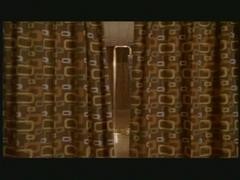Cannes Lions
Persepolis Reimagined
MEDIA.MONKS, Los Angeles / GETTY / 2023


Overview
Entries
Credits
Overview
Background
Getty Villa’s sweeping exhibition, Persia: Ancient Iran and the Classical World, was in alignment with the museum’s mission: to advance and share the world's visual art and cultural heritage for the benefit of all. But extending this important work to a global level required the integration of interactive technology, to re-envision how art and history inspire a modern audience.
Audience goals included accessibility and inclusivity. Engaging global viewers meant extending beyond “typical” museum experiences. Our content needed to be accessible and relatable: across all ages, from casual observers to educated historians, with particular care paid to the Iranian community.
Getty’s carefully curated collection of ancient art objects from museums across the globe revealed a story that took shape in the halls of Persia’s opulent and influential citadel, Persepolis. Virtually walking the grounds of this influential landmark led our educational storytelling to become personal, explorational, and memorable.
Idea
Persepolis Reimagined is an immersive WebGL experience that transports users back in time to discover the ancient capital of Persepolis. Exploring a detailed 3D recreation, visitors can discover the grand palaces and intimate courtyards of the citadel firsthand.
A simple scrolling interface allowed users to move at their own pace, mirroring an actual path a visiting emissary would have traveled. On their journey, users encountered digitized artifacts from the exhibition—grouped by theme and placed inside related Persepolis structures. By placing these objects in spaces, instead of a traditional academic format, we not only educated, but created empathy by humanizing these ancient objects.
In addition to the predetermined path, a global map view and artifact catalog allows users to jump between buildings, hotspots with optional audio and text content in any order.
Persepolis Reimagined reinvented the traditional museum experience—giving users an opportunity to not only learn about history, but live it.
Strategy
Strategy’s role for Persepolis Reimagined had several goals: define segmentation for a global audience, maintain accessibility for a range of ages and knowledge levels, and most importantly, to balance academic information with a creative narrative.
Research included museum attendee motivators/ pain points, analysis of Getty’s internal research/ past digital endeavors, and competitive from other digitally-focused museum initiatives. This work formed three psychographic personas, an understanding of “digital exhibition” best-in-class tenets, and an overarching strategy integrating personalization, inspiration, and immersive escape.
Strategic support was consistent, in collaboration with Getty curators, historians, and creatives to unpack the “puzzle” of why and where artifacts would be placed within Persepolis. This deep collaboration allowed the team to evolve ideas while staying true to initial insights, ensuring technology did not overtake the creative concept, allowing the art and story to take center stage.
Execution
Persepolis was built over 200 years, but our brief was to recreate it in a few months. We worked with Getty curators and experts to design an accurate 3D recreation of Perseoplis as well as a narrative that showcased objects from the exhibition in their original context.
We spent months striving to accurately depict even the tiniest architectural details— all while optimizing the 3D model for web use. Achieving a photorealistic representation of a city-scale subject while allowing the user to explore details on a human scale was the biggest challenge.
To make file size requirements and device processing ability less demanding, things like lighting and surface details had to be baked into a single diffuse texture—using reflection, roughness, and normal maps only where absolutely necessary.
We carefully optimized our model and code in both WebGL and HTML/CSS —ultimately achieving the perfect balance between performance and audiovisual experience.
Outcome
Persepolis Reimagined increased awareness of an important historical monument while entrancing viewers in a personalized, repeatable, immersive experience that brought the past to life. Over 690,000 individual users visited the site, learning more about the origin and purpose of Persepolis.
An important strategic and creative goal was the inclusion of interactive features that allowed visitors to learn more on their own terms, building their own narrative. 1.6 million pageviews proved that visitors returned again and again to experience the wealth of information.
As a globally relevant offering, Persepolis Reimagined built a sense of community and understanding worldwide for people interested in the art objects and history that influence society to this day. Visitors from 186 countries enjoyed the interactive site.
Similar Campaigns
7 items



